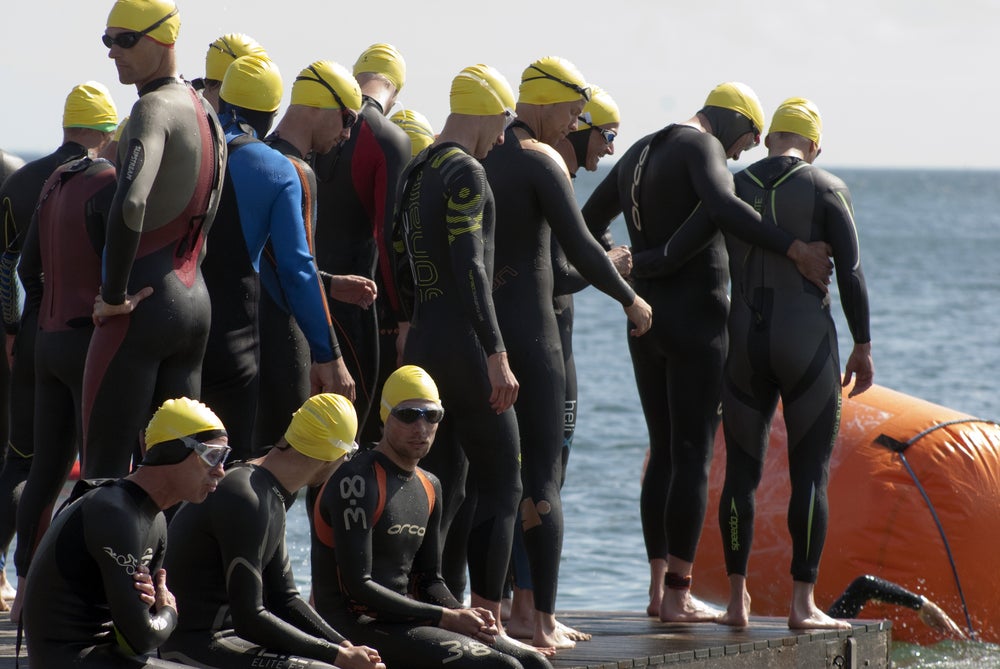Ask Coach Sara: How Often Should You Replace Your Wetsuit?

Photo: <a href="http://www.shutterstock.com/gallery-7381p1.html?cr=00&pl=edit-00">Carsten Medom Madsen</a> / <a href="http://www.shutterstock.com/editorial?cr=00&pl=edit-00">Shutterstock.com</a>
Your Twitter questions about swimming as a triathlete, answered by coach and professional triathlete Sara McLarty.
Q: How often should you replace your wetsuit? -@max_b89
A: Buying a new wetsuit can put a strain on your annual triathlon budget. Fortunately, if you take care of it, it should last you multiple seasons of racing. Even most rips, tears and holes can be repaired with careful patching or Super Glue. I would suggest splurging on a new suit if: your suit has major damage that can’t be sufficiently repaired, you have significantly changed body sizes or weight or if you own a relic from a previous decade. Improvements in technology and fit warrant buying a new suit every 5–7 years.
RELATED: What Is A Wetsuit Made Of?
Q: What type of strength training should you do to improve stroke efficiency in the winter months? –@Esli82
A: First, place an emphasis on front, back and side core strength. Most of your power in the water comes from maintaining a strong and tight core in a horizontal position. When you lose your core power, you lose stability, and technique immediately suffers. Second, prevent shoulder injuries with prehab exercises. Use a stretch cord tied to the doorknob for resisted internal and external rotation. Finally, improve your “swimmer’s physique” with lat pull-downs and triceps push-downs. You will look like Ryan Lochte in no time!
RELATED: Dry Land Strength For A Strong Stroke
Q: If I gain upper-body mass, will it improve my swimming by helping my upper body sink and making my body position more level? –@pritchettbill
A: Stand on the pool deck of any Masters swimming practice and you will quickly realize that swimming fast does not depend on body type. The same goes for maintaining a horizontal body position in the water. Your body position will become more level if you learn how to relax and float in the water rather than trying to hold yourself on top of the water. Notice how you float better when a majority of your body is under the water and just a small portion of your head and back are above the surface. Finally, use your strong core to keep your lower body balanced just below the surface of the water.
RELATED: Priority One For Swimmers – Get Level
Got a swimming question? Coach Sara wants to help. Just tweet your queries to @SaraLMcLarty.